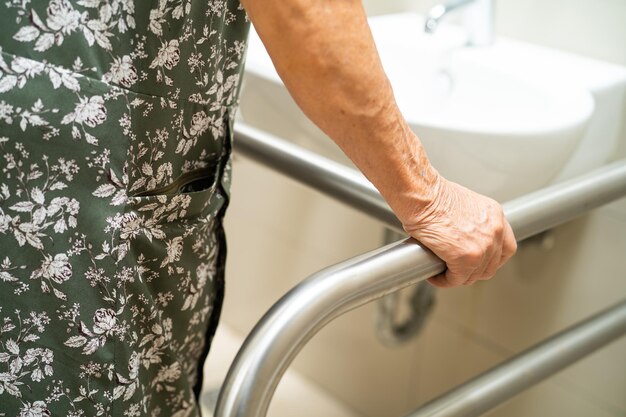Understanding Functional Incontinence: What You Need to Know
Incontinence affects millions worldwide, but not all types are created equal. Functional incontinence often flies under the radar, yet understanding it can significantly impact the quality of life for those affected and their caregivers. This guide delves into what functional incontinence is, its causes, and practical tips for managing it effectively.
What is Functional Incontinence?
Functional incontinence is a type of urinary incontinence where an individual cannot reach the bathroom in time to urinate, due to reasons not related to urinary tract issues. Unlike other types, such as stress or urge incontinence, functional incontinence arises from physical or cognitive barriers that prevent timely bathroom access. This distinction is crucial for identifying appropriate management strategies.
Causes of Functional Incontinence
Understanding why someone might experience functional incontinence can help tailor management strategies. Here are the common causes:
Physical Limitations
- Mobility Issues: Conditions like arthritis, injury, or any physical impairment that affects movement can prevent a person from reaching the toilet in time.
- Environmental Barriers: Unavailability of accessible restrooms or obstacles in home settings can impede timely bathroom use.
Cognitive Impairments
- Dementia or Alzheimer's Disease: Cognitive decline can lead to confusion, forgetfulness, or an inability to recognize the need to urinate.
- Neurological Disorders: Conditions affecting brain function, like Parkinson’s disease, can hinder the ability to swiftly respond to the urge to urinate.
Psychological Factors
- Depression or Anxiety: Mental health conditions can affect motivation or capacity to address basic needs, including timely bathroom visits.
- Stressful Environments: High-stress situations can distract individuals and interfere with their response to bodily cues.
Signs and Symptoms
Recognizing the signs of functional incontinence is essential for early intervention and management. Common indicators include:
- Frequent toilet accidents not related to urgency or overflow.
- Delay in response time to the urge to urinate.
- Increasing dependence on others for toileting assistance.
- Frustration or embarrassment stemming from toileting incidents.
Managing Functional Incontinence
While functional incontinence can be challenging, several management strategies can improve outcomes and enhance independence.
Assess and Alter the Environment
- Remove Obstacles: Ensure pathways to the bathroom are clear of furniture and other potential trip hazards.
- Enhance Accessibility: Install grab bars and ensure the bathroom is easily accessible, with appropriately positioned light switches.
Mobility Aids
- Use Assistive Devices: Encourage the use of walkers or canes for those with mobility issues to hasten the journey to the bathroom.
- Install Raised Toilet Seats: These can make it easier for individuals with reduced mobility to use the toilet effectively.
Cognitive and Behavioral Support
- Establish a Routine: Encourage scheduled bathroom visits to reduce accidents.
- Use Reminders and Prompts: Set alarms or use verbal cues to remind individuals of regular bathroom breaks.
Clothing Adaptation
- Easy-to-Remove Clothing: Velcro fasteners and elastic waistbands can minimize the time taken to undress in the bathroom.
- Avoid Complicated Fastenings: Simplified clothing options can reduce toileting accidents.
Psychological and Caregiver Support
- Provide Reassurance: Emotional support and patience can ease the stress associated with incontinence.
- Educate Caregivers: Training in assisting with mobility and toileting can enhance care quality and reduce the risk of accidents.
Prevention and Lifestyle Adjustments
While not all aspects of functional incontinence are preventable, some lifestyle adjustments can mitigate risks:
- Regular Exercise: Helps maintain mobility and independence.
- Balanced Diet: Adequate fluid intake and fiber can prevent constipation, which can exacerbate incontinence.
- Mindfulness Practices: Techniques such as yoga and meditation can relieve anxiety that might contribute to incontinence.
When to Seek Professional Help
Although managing functional incontinence at home is possible, some situations require professional intervention:
- Significant Mobility Changes: Sudden inability to move or increased dependence on assistance warrants professional evaluation.
- Sharp Cognitive Decline: Rapid worsening of memory or cognitive function should prompt immediate medical consultation.
- Persisting Symptoms: Despite alterations, ongoing issues call for professional advice to reassess strategies.
Impact on Quality of Life
Functional incontinence can affect the quality of life, not just for the individual, but also for family members and caregivers:
- Social Isolation: Embarrassment about accidents may lead to withdrawal from social activities.
- Caregiver Strain: Increased reliance on caregivers can elevate stress and fatigue.
Creating a Supportive Community
Building a network of support is beneficial for those living with functional incontinence:
- Support Groups: Engaging with others facing similar challenges can offer emotional support and practical advice.
- Educational Resources: Awareness and education can reduce stigma and provide vital information on managing the condition.
Final Insights
Functional incontinence is an often overlooked but prevalent condition that impacts many aspects of daily living. By understanding its causes, symptoms, and management strategies, individuals and caregivers can take practical steps to address it effectively.
📝 Summary of Key Takeaways
- Definition & Causes: Functional incontinence involves toileting issues due to mobility or cognitive impairments rather than direct urinary problems.
- Signs to Watch For: Include frequent accidents and delays in responding to urinary urges.
- Management Strategies:
- Enhance environmental accessibility.
- Utilize mobility aids and assistive devices.
- Develop a consistent toileting routine.
- Lifestyle Adjustments: Promote regular exercise, a balanced diet, and mindfulness to mitigate risks.
- Support Networks: Community support and educational resources can empower individuals and caregivers.
By focussing on tailored interventions and fostering supportive environments, living with functional incontinence becomes more manageable, allowing individuals to maintain independence and dignity in their daily lives.

Related Articles
- Are Incontinence Supplies Tax Deductible
- Can a Bladder Infection Cause Urinary Incontinence
- Can a Kidney Stone Cause Incontinence
- Can a Urinary Tract Infection Cause Incontinence
- Can a Uti Cause Incontinence
- Can Constipation Cause Incontinence
- Can Dairy Cause Incontinence
- Can Hemorrhoids Cause Bowel Incontinence
- Can Hemorrhoids Cause Incontinence
- Can Incontinence Be Cured